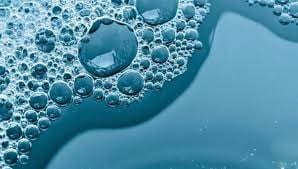The Science Behind Defoamers and Their Role in Foam Control
The Science Behind Defoamers and Their Role in Foam Control
Blog Article
How Defoamers Improve Performance in Production and Manufacturing

Understanding Defoamers
Defoamers play an important duty in numerous making processes by successfully combating the development of foam, which can influence and disrupt procedures item quality. Foam can arise in many contexts, such as during blending, home heating, or chemical reactions, possibly causing inefficiencies and inconsistencies in products. The mechanism by which defoamers operate generally involves reducing the surface area tension of the liquid, permitting bubbles to integrate and climb to the surface quicker, where they can after that rupture.
Effective defoamers not only decrease foam formation yet also maintain compatibility with the product, making sure that there are no negative impacts on the final output. Comprehending the buildings and features of defoamers is important for manufacturers aiming to maximize their procedures, boost productivity, and maintain the integrity of their items (defoamers).
Key Benefits of Defoamers
Making use of defoamers in making procedures uses a series of substantial advantages that enhance functional effectiveness and product quality. One of the main benefits is the decrease of foam development during production, which can block machinery and interrupt process. By minimizing foam, defoamers guarantee smoother operations, bring about decreased downtime and maintenance costs.
In addition, defoamers improve product uniformity by protecting against air entrapment, which can endanger the honesty of the end product. This is specifically crucial in sectors where aesthetic look and appearance are essential, such as in paints, coatings, and food products. Enhanced item quality not just fulfills consumer assumptions but also strengthens brand reputation.
Additionally, defoamers can assist in maximizing source usage. By improving the efficiency of raw product use, they add to set you back savings and lowered waste, aligning with sustainability goals. The application of defoamers can lead to shorter handling times, enabling producers to enhance manufacturing ability without significant funding investment.
Applications in Various Industries
In making procedures throughout different markets, the application of defoamers plays an essential role in boosting efficiency and item quality. These chemical ingredients are used in industries such as food and drink, drugs, and fabrics to minimize foam-related challenges.
In the food and drink sector, defoamers are crucial during the fermentation procedure, stopping foaming that can disrupt manufacturing and spoil the item's honesty. In the pharmaceutical sector, defoamers are used in the formula of fluid medicines, guaranteeing harmony and stability while decreasing waste.
Textile manufacturing also gains from defoamers, as they are made use of in dyeing and ending up procedures to promote even distribution of dyes and chemicals. This application not only this content enhances the end product's appearance but also decreases the amount of water and energy eaten throughout manufacturing.
Furthermore, in the paper and pulp industry, defoamers help maintain procedure effectiveness by minimizing foam that can impede machinery efficiency. Overall, the varied applications of defoamers across these industries emphasize their relevance in enhancing manufacturing procedures and supplying high-grade items.

Picking the Right Defoamer
Selecting a proper defoamer is essential for making the most of efficiency and high quality in making procedures. The selection of defoamer relies on different aspects, including the particular application, the sort of foam being produced, and the formulation of the product being made.

Firstly, take into consideration the chemical compatibility of the defoamer with various other components in your formula. A defoamer that interacts adversely with various other components can detrimentally influence item high quality. In addition, the temperature and pH range during handling are critical; some defoamers carry out ideally under particular conditions while becoming inadequate in others.
Secondly, review the defoamer's efficiency qualities, such as its capacity to promptly reduce foam and its persistence throughout production. It is essential to select a product that not just eliminates foam swiftly but additionally maintains its performance over time.
Finally, think about governing and environmental aspects, particularly if your manufacturing process goes through rigorous compliance requirements. Picking a low-toxicity or biodegradable defoamer can assist fulfill sustainability goals while making sure functional efficiency. By thoughtfully analyzing these requirements, manufacturers can make informed choices that enhance performance and item integrity.
Best Practices for Application
Effective application of defoamers in manufacturing procedures calls for mindful planning and adherence to best techniques. Choosing the right defoamer, as more information formerly reviewed, is critical; guarantee it is compatible with the products included and deals with the identified lathering problems effectively.
Following, preserve clear interaction with all stakeholders, consisting of operators and top quality control groups. Training sessions can aid make certain that everybody understands the application procedures, prospective effects on product high quality, and safety factors to consider. Executing a test phase can likewise be helpful; monitor efficiency closely to assess effectiveness and make needed changes.
Furthermore, routine testing and monitoring of visit this site right here foam degrees can offer beneficial understandings right into the defoamer's performance over time. Changing does in reaction to changes in manufacturing variables will certainly help preserve optimum efficiency - defoamers. Lastly, recording all procedures and results promotes continuous enhancement, enabling fine-tuning of defoamer use and enhancing general performance in manufacturing operations.
Conclusion
In recap, defoamers play an essential duty in enhancing performance within manufacturing and production processes. By decreasing foam development and promoting bubble coalescence, defoamers add to improved product top quality, consistency, and functional performance.
The advantages extend to item quality and price financial savings, as defoamers help simplify processes.Defoamers play an important role in numerous producing procedures by successfully combating the formation of foam, which can affect and interfere with operations item quality. Recognizing the homes and features of defoamers is vital for manufacturers aiming to maximize their procedures, improve productivity, and keep the integrity of their items.
Making use of defoamers in producing procedures offers a variety of substantial benefits that improve functional efficiency and item quality.Additionally, defoamers enhance item uniformity by avoiding air entrapment, which can endanger the integrity of the last item.
Report this page